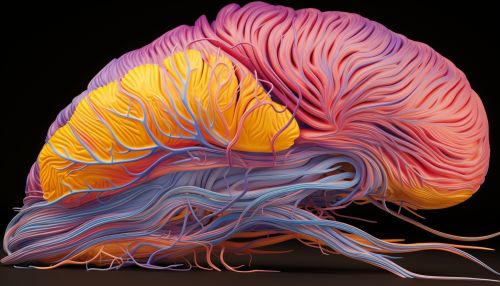Cognitive Mechanisms of Cognitive and Spatial Navigation
Introduction
Cognitive and spatial navigation refers to the mental processes and mechanisms that allow an organism to orient itself in space, find its way from one location to another, and store and recall this information. This complex cognitive function involves various brain regions, including the hippocampus, entorhinal cortex, and prefrontal cortex, and is influenced by a variety of factors, such as age, sex, and environmental complexity.


Cognitive navigation is a multifaceted process that involves several cognitive mechanisms. These include spatial memory, attention, perception, decision-making, and problem-solving.
Spatial Memory
Spatial memory is a critical component of navigation. It allows organisms to remember the location of objects and places in their environment. This memory system is primarily associated with the hippocampus and entorhinal cortex.
Attention
Attention is another crucial cognitive mechanism involved in navigation. It enables organisms to focus on relevant spatial information and ignore irrelevant stimuli. The prefrontal cortex plays a significant role in attentional processes.
Perception
Perception involves the processing of sensory information to understand the environment. It is essential for navigation as it allows organisms to recognize landmarks and perceive distances.
Decision-Making
Decision-making in navigation involves choosing the best route or direction based on the available spatial information. This cognitive process is associated with the prefrontal cortex.
Problem-Solving
Problem-solving is often required in navigation, especially when the usual routes are blocked or when navigating in a new environment. This cognitive mechanism involves the use of spatial memory, attention, and decision-making.
Spatial navigation is the ability to move through space, from one place to another. It involves two main types of navigation strategies: egocentric navigation and allocentric navigation.
Egocentric navigation is a self-centered navigation strategy. It involves navigating based on the individual's current position and orientation in space. This strategy is primarily associated with the parietal cortex.
Allocentric navigation is a world-centered navigation strategy. It involves navigating based on a mental map of the environment, independent of the individual's current position or orientation. This strategy is primarily associated with the hippocampus and entorhinal cortex.
Several factors can influence cognitive and spatial navigation. These include age, sex, environmental complexity, and experience.
Age
Age can significantly affect cognitive and spatial navigation. Aging is often associated with declines in spatial memory and navigation abilities, likely due to changes in the brain regions involved in these processes.
Sex
Sex can also influence cognitive and spatial navigation. Research has shown that males and females may use different navigation strategies and have different strengths in spatial tasks.
Environmental Complexity
The complexity of the environment can affect cognitive and spatial navigation. Navigating in a complex environment requires more cognitive resources and can be more challenging.
Experience
Experience plays a crucial role in cognitive and spatial navigation. With experience, organisms can improve their navigation skills, develop more efficient routes, and better remember spatial information.
Conclusion
Cognitive and spatial navigation is a complex cognitive function that involves various brain regions and cognitive mechanisms. It is influenced by several factors, including age, sex, environmental complexity, and experience. Understanding these cognitive mechanisms and factors can provide insights into how organisms navigate their environment and can have implications for various fields, such as cognitive neuroscience, psychology, and artificial intelligence.
